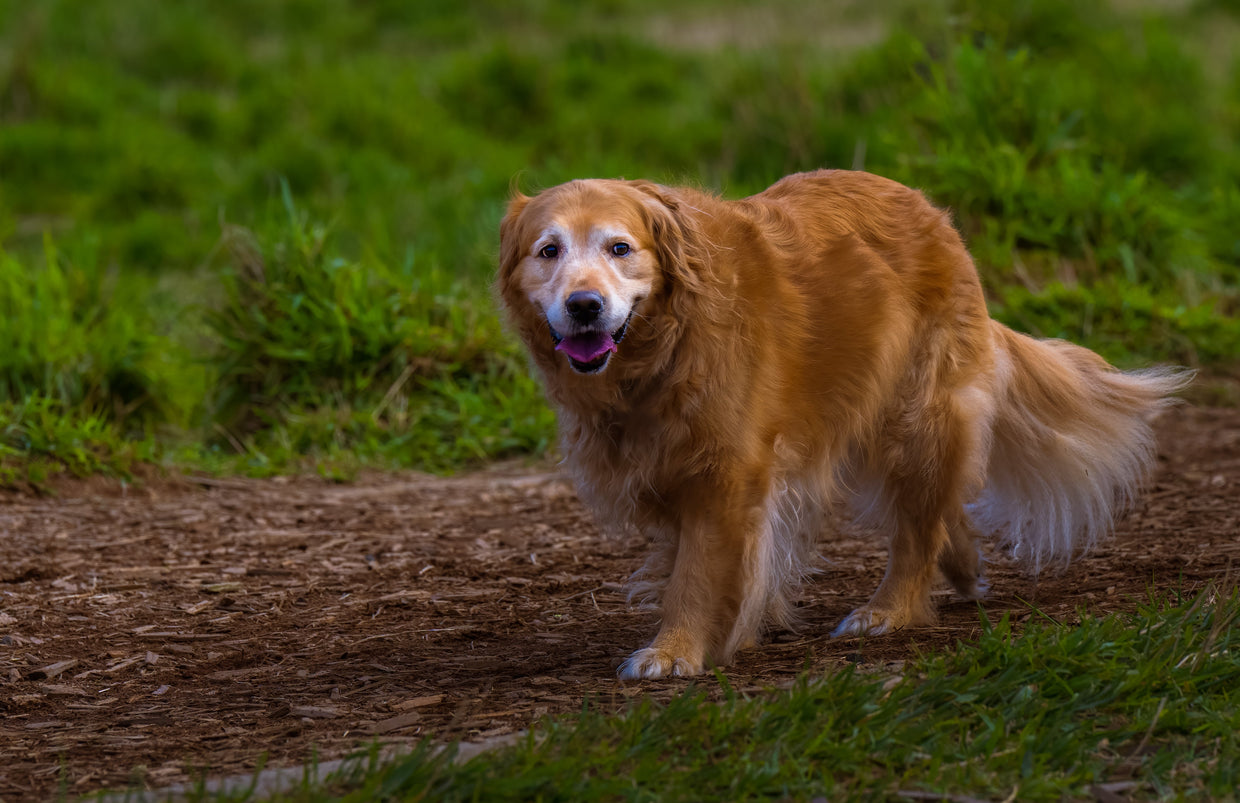

Exercising older dogs
Your furry friend may be getting older, but regular movement is still important. From how to exercise an old dog to adjusting their routine as they age, we’re here to help you keep your senior companion happy and active.
How much exercise does an old dog need?
Just like us, dogs benefit from regular activity throughout their lives. The right amount of exercise helps maintain mobility, supports overall wellbeing and keeps them engaged. However, as they age, their needs can change.
It’s always a good idea to check with your vet to understand how much exercise an old dog needs based on their individual health, mobility and fitness level. Exercise should be enjoyable, not exhausting, so adapting their routine to suit their age is key.
Regular exercise can help to:
• Maintain fitness – Keeping muscles strong and joints moving can support mobility.
• Manage weight – Metabolism slows with age, so staying active helps prevent excess weight gain.
• Strengthen your bond – Many dogs still love their walks, even if they prefer a slower pace with plenty of sniff stops.
How to exercise an old dog
As dogs get older, they may not be able to run for miles or chase after a ball like they used to, but there are plenty of ways to keep them moving comfortably.
Make small adjustments
If your dog used to enjoy long walks, consider shorter, more frequent outings. If they love the park, driving there instead of walking can help them save energy for their favourite part of the trip.
Go at their pace
A gentle stroll with lots of breaks is just as valuable as a faster-paced walk, and walking rather than running can be lower impact for dogs as they age.

Stick to a routine
It can be tempting to skip walks when your dog slows down, but consistency is key. Even short, daily walks can help keep their body and mind active.
Exercises for old dogs’ back legs
If your dog’s back legs seem weaker, low-impact exercises can help support strength and mobility.
• Slow incline walks – Walking up gentle slopes can encourage muscle engagement.
• Swimming – A great way to keep active while being gentle on the joints.
• Trick training – Simple movements like ‘sit’ and ‘stand’ can keep them engaged while encouraging movement.
If you’re unsure what’s best for your dog, your vet can offer guidance tailored to their needs.
How can I help my older dog enjoy walks more?
If your dog seems less enthusiastic about walks, age-related changes could be making the outside world feel overwhelming. Hearing and sight loss can make them more cautious, and if they’re slowing down, they might not feel as confident.
Keeping walks predictable, using clear verbal cues and allowing them extra time to adjust can all help. It’s also useful to see your vet, as they can help you to identify why your dog might be less eager for walkies.
Supporting your older dog’s mobility
If your dog is slowing down, additional support may be helpful. Nutritional support, including high-quality joint care supplements, can help maintain mobility as they age.
YuMOVE Joint Care PLUS is our high-strength formula designed to aid mobility, support joint structure and soothe joints with Omega-3s – ideal for dogs that may need joint support.
For older dogs or those that may need extra joint support, PLUS Max Strength is our higher-strength formula. Our ActivEase® Complex, including Green Lipped Mussel, contains a unique combination of quality ingredients to help deliver our strongest PLUS Joint Care formula yet.
Final thoughts on old dog exercise
Aging doesn’t mean slowing to a stop – regular movement is key to keeping your senior dog feeling their best. By making small adjustments and choosing low-impact activities, you can help them stay active, engaged and comfortable for as long as possible.
What’s your favourite way to keep your senior dog moving? Let us know on Facebook or Instagram.







